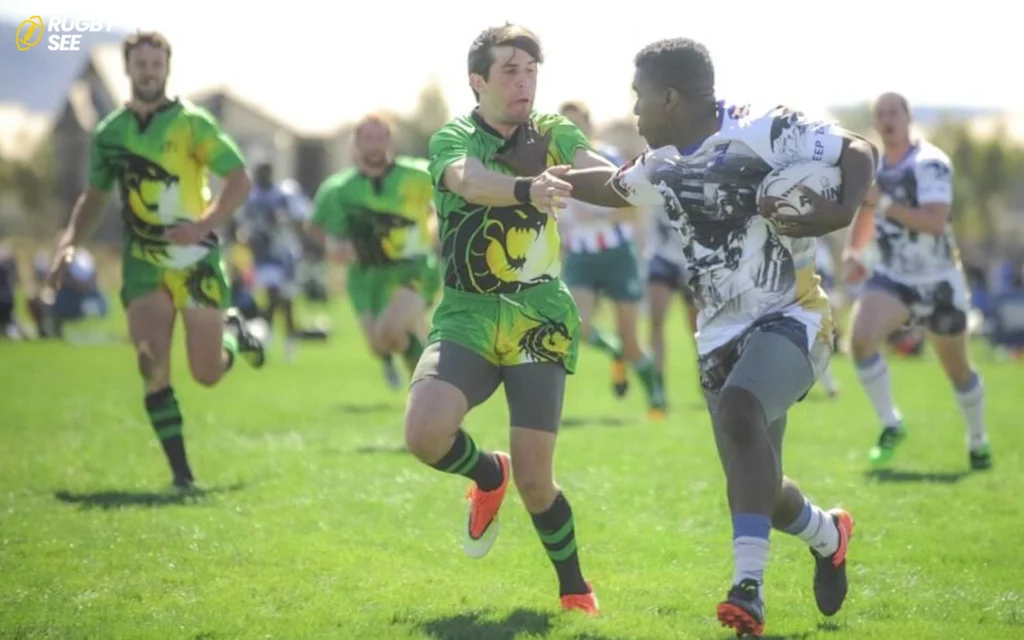Rugby, a sport known for its physical intensity and robust gameplay, often requires players to take measures to protect themselves from injuries. One common practice among rugby players is the use of tape on their ears. But what tape do rugby players use on their ears, and why? In this article, we’ll delve into the types of tape commonly used for ear protection in rugby and explore the reasons behind its use.
The Importance of Ear Protection in Rugby
Rugby is a contact sport where players frequently engage in physical tackles, scrums, and rucks. As a result, injuries to the ears, such as cauliflower ear, are not uncommon. Cauliflower ear occurs when the ear suffers trauma, leading to blood collecting between the cartilage and the skin. Over time, this can cause the ear to become swollen and deformed, resembling a cauliflower.
To prevent or minimize the risk of cauliflower ear and other ear injuries, rugby players often use tape to provide extra support and protection to their ears during matches and training sessions.
Types of Tape Used in Rugby
Zinc Oxide Tape
Zinc oxide tape is one of the most commonly used types of tape for ear protection in rugby. It is a rigid, adhesive tape that provides excellent support and stability. Rugby players typically apply zinc oxide tape in a specific pattern to cover and protect their ears effectively. The tape is durable and resistant to sweat and moisture, making it ideal for use during intense physical activity.
Kinesiology Tape
Kinesiology tape, also known as k-tape, is another popular option for ear protection in rugby. Unlike zinc oxide tape, kinesiology tape is more flexible and stretchy, allowing for a greater range of motion. Rugby players often use k-tape to provide support to their ears while still maintaining comfort and flexibility during play. Kinesiology tape is available in various colors and designs, allowing players to personalize their ear protection.

Athletic Tape
Athletic tape, also referred to as sports tape, is a versatile option for ear protection in rugby. It is durable, adhesive, and provides moderate support to the ears. Rugby players may use athletic tape alone or in combination with other types of tape for added reinforcement. Athletic tape comes in different widths and can be easily torn by hand, making it convenient for quick application during matches and training sessions.
How Rugby Players Apply Tape to Their Ears
The method of applying tape to the ears can vary among rugby players, but there are common techniques used to ensure effective protection:
- Cleaning the Skin: Before applying tape, rugby players clean their ears and surrounding skin to remove any dirt, oil, or sweat. This helps the tape adhere better and reduces the risk of skin irritation.
- Creating a Base Layer: Rugby players often start by applying a base layer of zinc oxide tape around the perimeter of the ear. This provides a foundation for additional layers of tape and helps anchor the tape in place.
- Building Layers: Rugby players then apply additional layers of tape, crisscrossing over the ear to provide optimal coverage and support. The tape is smoothed down to ensure it adheres securely to the skin.
- Securing the Tape: Once the desired coverage is achieved, rugby players may use scissors to trim any excess tape and ensure a neat appearance. The tape is pressed firmly against the skin to secure it in place.
Maintaining Ear Health
In addition to using tape for ear protection, rugby players must also prioritize ear health to prevent injuries and maintain optimal performance. Here are some tips for maintaining ear health:
Regular Cleaning
Regularly clean the ears with mild soap and water to remove dirt, sweat, and bacteria that can contribute to infections and if you want to know about Rugby Field read Does Rugby Have Field Goals? Understanding Rugby Scoring.
Proper Hygiene Practices
Avoid inserting foreign objects into the ears, such as cotton swabs or fingers, as this can push wax deeper into the ear canal and increase the risk of injury or infection.
Ear Examinations
Periodically inspect the ears for signs of irritation, inflammation, or injury. Seek medical attention if you notice any abnormalities or experience pain, swelling, or drainage from the ears.
Ear Protection Beyond Tape
In addition to tape, consider using other forms of ear protection, such as ear guards or headgear, especially during high-contact activities like scrums and tackles.
Understanding the Risks of Cauliflower Ear
Despite preventive measures, cauliflower ear can still occur, particularly in high-impact sports like rugby. Understanding the risks associated with cauliflower ear is essential for rugby players:

Impact on Hearing
Cauliflower ear can affect hearing by blocking the ear canal or causing damage to the delicate structures of the inner ear. This can lead to hearing loss or other auditory problems if left untreated.
Long-Term Complications
Untreated cauliflower ear can result in permanent disfigurement and deformity of the ear, impacting self-esteem and quality of life. It may also increase the risk of recurrent infections and other complications.
Treatment Options
Early intervention is crucial for treating cauliflower ear effectively. Treatment options may include draining excess fluid from the ear, applying compression, and, in severe cases, surgical correction to reshape the ear.

Conclusion: Protecting Ears for Optimal Performance
In conclusion, ear protection is an essential aspect of injury prevention in rugby. By using tape to support and safeguard their ears, rugby players can minimize the risk of cauliflower ear and other ear injuries during matches and training sessions. Zinc oxide tape, kinesiology tape, and athletic tape are popular choices for ear protection, each offering unique benefits in terms of support, flexibility, and durability and if you want to know about Cheerleaders in Rugby read does rugby have cheerleaders.
Whether it’s providing stability during scrums or enhancing comfort during tackles, the right tape can make a significant difference in a rugby player’s performance and well-being on the field. So, the next time you watch a rugby match, take note of the tape adorning the players’ ears—it’s not just a fashion statement but a crucial tool for protecting their ears and ensuring they can continue to play the game they love, safely and confidently.










